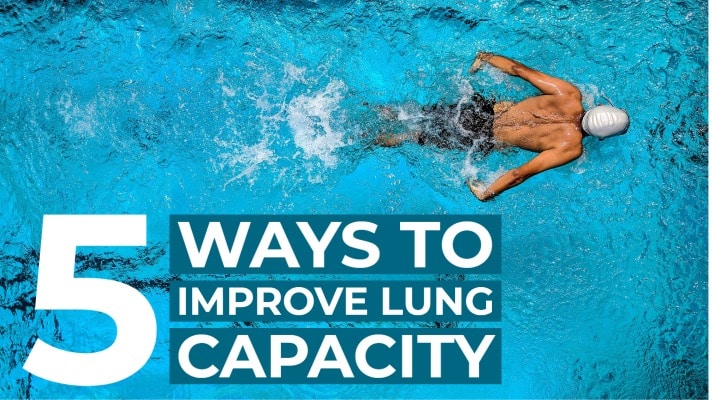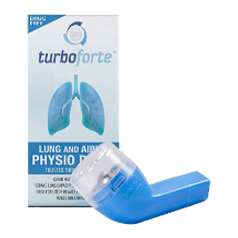
Whatever your reason for seeking ways to strengthen your lungs, we’ll cover a range of tips in this article that you can start acting on today. From mucus clearing devices and PEP therapy to breathing techniques, you can employ any or all of these methods separately or in combination.
There are many reasons to invest time in improving your lung health.
- You might suffer from a chronic lung disease such as Chronic Obstructive Pulmonary Disease (COPD), cystic fibrosis, bronchiectasis, or chronic bronchitis.
- You may be looking to regain lost or decreased lung function from smoking or illness.
- You might be an athlete or a singer seeking peak performance.
- You may simply want to get your lungs in tip-top shape!
How to measure your lung capacity
There are several assessments experts such as respiratory therapists can carry out to measure your lung capacity. It’s typically called spirometry, and it can involve exercise tests or testing devices to determine the causes of your shortness of breath. Tests range from exhaling forcefully for one second, exhalation after breathing all the way in, 15 seconds of fast breathing, a diffusing capacity test that measures how easily oxygen enters the lungs, and more.
How to improve your lung capacity
Your lung capacity actually goes beyond your lungs themselves. Everything in the human body is connected, which means that your chest walls, your diaphragm and your intercostal (rib) muscles play roles in your lung capacity. Your lung capacity can further impact your mobility, alertness and mood. There are a variety of factors that can boost your lung capacity and health, from your environment to posture and habits.
1. Get help: mucus clearing devices
Secretions like phlegm and mucus build up in the lungs and block air passages, which in turn can lead to bacterial infections and potential irreversible damage. Oscillatory Positive Expiratory Pressure (OPEP) therapy using a mucus clearing device (also known as a mucus clearance device, airway clearance device, respiratory device or even a PEP device) like Turboforte can help clear excess secretions, reduce gas trapping and improve lung ventilation.
Turboforte Lung Physio can also help with lung expansion, lung strengthening and increased oxygen capacity. Competitive athletes, singers and public speakers are well aware of the power of strong lungs and mastery over their oxygen use!
2. Get help: other health aids
In terms of other assistance, air purifiers and house plants can help scrub the air in your indoor environments, improving the quality of the air you breathe, which in turn makes for happier, stronger lungs. Pollution, even short-term pollution exposure, can affect your lung health. If you live in cities, such exposure is unavoidable, but you can do your best to counteract it when you’re indoors, or take advantage of low-pollution days for outdoor activity.
Along with fresh air, vitamin D has also been shown to be beneficial to better lung function – so get out there and get some sunlight along with your fresh air! You can also find vitamin D in supplements, of course, and foods such as oily fish, egg yolks, and red meat.
3. Get active: interval training
While you’re out there soaking in vitamin D and enjoying high quality fresh air, moderate intensity aerobic exercise can also help improve your lung capacity. In order to feel less winded during activity, experts such as sports therapists recommend trying interval training.
In this type of exercise, you alternate between short bursts of intense and low-effort activity: intense for 30 seconds, then low-effort for 1-2 minutes. This can take the form of adding short bursts of jogging to your normal brisk walks, for those who use walking as their primary form of exercise.
Gyms and personal trainers have guides for interval training home workouts: look for guides on things like tabata, cardio HIIT, full-body HIIT, HIIT with weights, and HIIT for athletes.
4. Get healthy everywhere: smoking, stretching and straightening up
In order to improve your lung health and lung capacity, you’re going to want to stop smoking (and stop vaping), and decrease the amount of time you spend in smoke-filled environments. Research suggests that your lung capacity improves measurably within months of quitting smoking – and Turboforte can help you achieve improved lung health without the side-effects of drugs.
Studies have also shown that poor posture can decrease your lung capacity. Sitting slumped or slouched can squeeze your lungs, making you breathe smaller and stretch less over long periods of time. Sit up straight and look into exercises that help stretch your ribs, back, and intercostal muscles to give yourself the best chance at improving your lung capacity.
5. Get good habits: breathing exercises, laughing, singing, and drinking water
We started this article by saying there were things you could do every day to improve your lung capacity. How much do you laugh every day? Do you sing in the shower? Are you getting enough water? These things all contribute to healthier, stronger lungs! Whoever said laughter is the best medicine was onto something: who knew it could help here, too?
There are also many breathing exercises you can do while you’re hanging out watching TV or waiting at a red light. Formally they may be known as airway clearance techniques or breathing techniques, but we like to call these exercises belly breathing (or diaphragmatic breathing) and pursed lip breathing.
If you can perform these exercises for 5-10 minutes every day, your lungs will thank you. If all you can remember is to stand up straight, breathe in, hold your breath for 10 seconds, then exhale, and do that a few times, you’ll still be on a path to happier, stronger lungs.
Whatever your reasons for wanting it, remembering all the easy methods in this article will help you start improving your lung capacity today. With expert help and tools like mucus clearing devices, and a range of good, healthy, active habits, you’ll find your lungs in better shape than ever.
What is Turboforte Lung Physio?
Turboforte is a medicinal treatment that is all-natural and does not require a prescription. Unlike decongestant medication, which use medicine to constrict blood vessels, thereby reducing inflammation and allowing for easier breathing.
Turboforte is much simpler, and you can feel it working.
Oscillating Positive Expiratory Pressure (OPEP) technology is used by our patented, FDA approved device to relieve congestion.
It’s as simple as you exhaling through the device, a metal ball bearing in the cap is forced to move up and down by the positive pressure of your breath, sending vibrations through your lips and down into your airways.
These vibrations paired with the positive pressure can loosen phlegm, clear airways and exercise your lungs.
Simply exhale through the device for a ten minute period, the vibrations will free phlegm and the pressure will encourage it to move upwards through your airways, so be prepared to cough up your now loosened chest congestion, leaving behind nothing but healthy lungs.
It’s recommended to check with your doctor if you have symptoms relating to poor lung health, shortness of breath, pain or a lasting cough before trying any new exercise.




